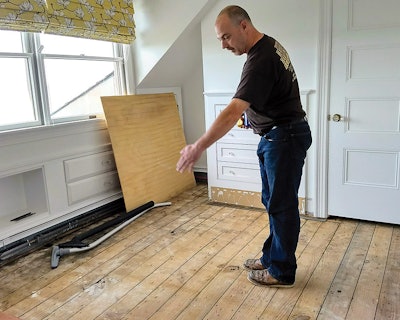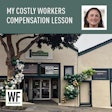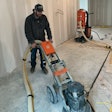
A while back on one of the wood flooring Facebook groups, there was a discussion (as there often is) about the prices we charge our customers for our work and how to deal with customers who try to haggle on price. I've noticed that when I raised my prices, the customers questioned the prices much less than they did before … and I'm booked for months out. This was not something I had expected.
Raising your prices can be scary, and when I started out on my own, I didn't have any particular strategy for how to price my jobs. Like many other wood flooring contractors, I didn't go to business school or even intend to be a wood flooring pro at all—I moved to Rhode Island to go to culinary school. And that's where I met my roommate, who had grown up doing wood floors for his family's business. He hated it. After years of working in the culinary field, I ended up doing wood flooring with him. I loved it.
After working for his business and learning the ropes, I was offered a job at a large company in the Boston area and worked there for nearly 10 years. About 11 years ago I decided to go take the leap to start my own business. I used our wedding money to buy a Hummel, a B2, and the rest of my equipment, and I was off and running. I was immediately booked three months out! Unfortunately, soon after I went out on my own, the economy tanked, and times were tough. During those first few years, I did wood flooring jobs as I got them and cooked at night at a restaurant.
As the years passed, the economy got better, and I didn't have to cook anymore, but my pricing strategy was still not much of a strategy at all. I pretty much priced based on what other wood flooring pros were charging, and it seemed to work out fine. I work by myself and out of my home, so I don't have a lot of overhead, and I was making money. On a significant number of my jobs, the customers would haggle with me over the price, and then, on the other hand, I did jobs where the customers were so thrilled with my work they were giving me a big tip. It made me think, "I'm the business owner—it's nice if people are happy, but if they're giving me a tip, clearly I'm not charging enough!"
Whenever a customer would haggle with me and I went down on the price, I never felt good about it.
Whenever a customer would haggle with me and I went down on the price, I never felt good about it; it wouldn't sit right with me. No matter the price, I always want the customer to be happy and will do what I can to make that possible. Lower-cost jobs did not mean a lower quality service. Because of this, while I was working on these jobs, I was always thinking I had lost out.
Looking back, I also wasn't charging enough for smaller jobs. I was still going by my regular per-foot charge, even for a 150-square-foot bedroom, which, it turns out, is ridiculous. It takes the same amount of time to set up and go back to the house three times to do the coatings, regardless of the room size. I also underestimated how long some jobs would take. On occasion, the job would end up being more challenging than I anticipated, and I couldn't tell the customer, "Sorry, it's going to be another $500 now—this is way harder than I thought!"
As I got busier and busier, I thought, "I can't do every job anyway, I might as well start raising my price." So, I did and have become even busier. For the last three years, I've been losing work because I just can't handle the volume. Now I feel like I'm in a sweet spot—I'm offering fair prices for high-quality work, and I'm happy at the end of the day.
RELATED: Why I Charge for Wood Floor Estimates
Now, when potential customers call, one of the first things I ask them is when they need the job done. I'm typically booked for a few months out, but in that time frame I strategically schedule two open weeks. Those open weeks are not filled based on first-come, first-served; instead they are reserved for the best job that comes up in that time frame—one I would otherwise lose if they had to wait three or four months to get on the schedule. For example, last summer I was able to do a job that was 1,800 square feet of 4-inch quartered white oak with a gray stain and three coats of job-site UV-cured finish. The job involved extensive demo and subfloor prep, and the total cost was over $30,000. I could have easily booked up those weeks with other jobs and would never have been able to do this one. As it was, this particular customer had to wait a month, which was one month longer than she wanted, but, luckily, I got the job. If a job like that doesn't come up, I can always move other jobs up in the schedule, or even have some time off.
All my work is word of mouth, and it's rare now that someone will try to haggle on price. These days, my price is final—no haggling—and if someone doesn't think that's fair, they're welcome to go somewhere else. I have more work than I can handle, and, best of all, 20 years after I first began, I still love doing wood floors.































